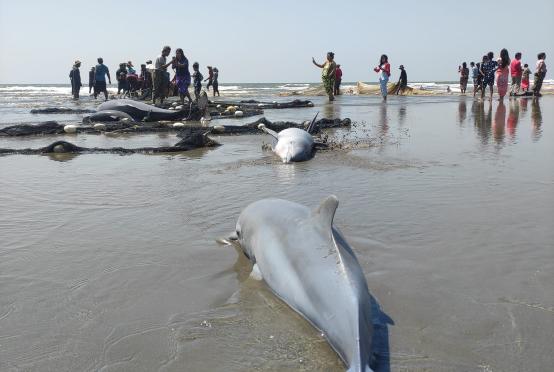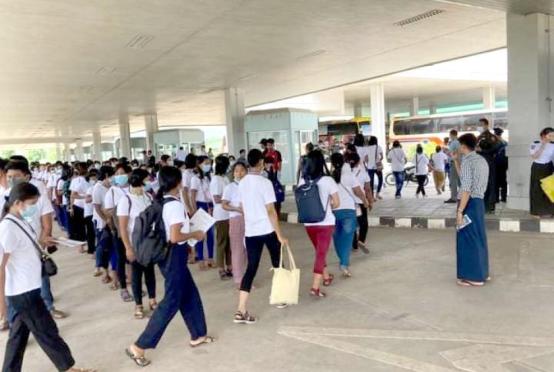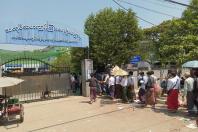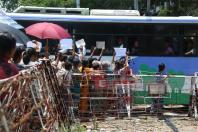MANILA (Philippines Daily Inquirer/ANN) - As the Philippines battles the spread of COVID-19 among its people, another malignancy continues to cast a shadow in a specific part of the country—the West Philippine Sea, where last week the Chinese Academy of Sciences launched two research stations on Fiery Cross (Kagitingan) and Subi (Zamora) Reefs in the Spratly Islands, ostensibly to “help scientists expand their research into deep sea ecology, geology, environment, material sciences and marine energy.”
According to China’s state news agency Xinhua, the research stations “play a part in monitoring ecological and seismic changes in key regions of the South China Sea.”
Such benign wording—but what it hides is the fact that China is illegally occupying the “key regions” mentioned, and its latest installations on the Kagitingan and Zamora Reefs, while ostensibly for scientific purposes, are primarily a means to fortify its hold on the area based on spurious claims that the international community has rejected.
Beijing’s latest push to strengthen its maritime supremacy in the region is particularly reprehensible, because it was done surreptitiously while the rest of the world is desperately fighting the novel coronavirus pandemic that had emerged from Wuhan, in the central province of Hubei, China. Apparently, despite the daunting battle it has had to wage in its own backyard against the outbreak starting in December last year, China is still keeping its sights on expanding its turf, and what better time than when its neighbors and the global community are distracted by COVID-19?
The expansion of the Spratly facilities are of a piece with Beijing’s other moves of dominance and assertion in the region, including the swarming of Pag-asa Island off Palawan by hundreds of Chinese vessels constituting its maritime militia. The Asia Maritime Transparency Initiative (AMTI) of the Center for Strategic and International Studies (CSIS) based in Washington, said it has tracked the presence of the Chinese maritime militia around Pag-asa Island “for 450 days and counting.” The Philippine military itself monitored 136 unique Chinese vessels near the island in the first two months of 2020.
What are these Chinese vessels doing around Pag-asa Island, which has been under Philippine control since 1971 and which hosts the civilian municipality of Kalayaan, along with a school, health center, military barracks, and a runway?
According to the CSIS-AMTI, they’ve been deployed to delay the Philippine army’s efforts to repair a beaching ramp and a runway on the island, key structures in defending the territory from possible invasion—though Defense Secretary Delfin Lorenzana has said the delays so far are attributable to bad weather. Still, Lorenzana himself had disclosed in November 2018 that China, with zero justifiable claim on Pag-asa, had objected strongly to the Philippines’ announced plan to rehabilitate the island’s facilities. “When he learned that we are going to repair our runway in Pag-asa, he came to me and said, ‘No,’” Lorenzana said, recalling his meeting with Chinese Ambassador Zhao Jianhua. And “when he learned that I was going to Pag-asa, he came to me and tried to dissuade me from going there.”
Such brazen muscle-flexing is expressed in other ways, such as Beijing’s regular deployment of research vessels that, international experts say, are playing an increasing role in China’s assertion of its maritime claims. The vessels’ civilian nature makes it difficult for other South China Sea claimants to take China to task directly.
Dissembling, double talk, and cunning appear to undergird much of China’s conduct in the South China Sea issue—the same unfortunate characteristics that have marked its otherwise valiant fight against the COVID-19 pandemic. It is well-documented by now how Xi Jinping’s authoritarian leadership, by resorting to the censure of whistleblower doctors and the suppression of early vital data on the mysterious new disease, had robbed the world of precious lead time and information to prepare for the outbreak. “Make no mistake, this is Xi Jinping’s coronavirus,” wrote Hilton Yip in the Hong Kong Free Press. “The blame and responsibility for the coronavirus epidemic lie fully on the Chinese CCP regime.”
Is Beijing chastened in any way? Now it feels even emboldened to sow disinformation and whitewash the narrative—by pushing the conspiracy theory that the United States, its current trade adversary, is to blame for the pandemic. China’s Foreign Ministry official Zhao Lijian tweeted on March 12: “It might be the US army who brought the pandemic to Wuhan… US owe us an explanation!”
No, it’s China, stealthy as ever, that owes the world an explanation.















